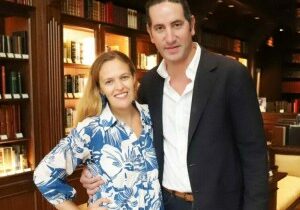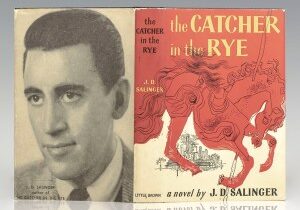 American children’s author and illustrator Theodore Seuss Geisel produced some of the most popular children’s books of all time under the pen name Dr. Seuss. Although most recognized for his vivid and original drawing style, Geisel’s works also carried a complexity that went beyond the function of entertaining children; many of his works had an autobiographical undertone and were written to be intentionally divergent from traditional children’s books. Rather than write stories to convey morals to children, many of Geisel’s stories expressed strong views on current social and political issues.
American children’s author and illustrator Theodore Seuss Geisel produced some of the most popular children’s books of all time under the pen name Dr. Seuss. Although most recognized for his vivid and original drawing style, Geisel’s works also carried a complexity that went beyond the function of entertaining children; many of his works had an autobiographical undertone and were written to be intentionally divergent from traditional children’s books. Rather than write stories to convey morals to children, many of Geisel’s stories expressed strong views on current social and political issues.
Born in Springfield Massachusetts, Theodore Robert Geisel later attended Dartmouth College where he adopted the pen name “Seuss” after he was caught drinking gin with friends in his college dorm room (which was illegal at the time under Prohibition laws). The pen name allowed him to continue publishing stories and political cartoons in collegiate periodicals. Encouraged by his future wife, Helen Palmer, to pursue his artwork as a career rather than graduate studies abroad, Geisel became an illustrator and cartoonist, producing political cartoons and advertisements for Vanity Fair, Life Magazine, General Electric, NBC, and Standard Oil.
His prolific work for such large companies throughout the Great Depression and World War II allowed Geisel and his wife to travel extensively; travels throughout Europe and Asia provided a major source of inspiration for Geisel’s future work. After the war, Geisel turned his concentration to writing children’s books; he went on to write and illustrate 60 books and short stories, many of which were turned into feature films and plays.
His stories were deemed so successful and original for Geisel’s use of poetic meter and his “droopy” drawing style which completely lacked straight lines. The pages of his stories were filled with complex architectural and mechanical objects and wild, often anthropomorphic animals and characters with expressive hand gestures.

First Edition of Horton Hears A Who! Inscribed by Dr. Seuss
Published in 1955, Horton Hears a Who told the story of Horton the Elephant and his discovery of a tiny world of tiny people existing on a tiny speck of dust. The book’s theme “a person’s a person, no matter how small” was inspired by a recent visit to post-war Japan where Geisel experienced a change of heart regarding his previously strong anti-Japanese sentiments he harbored throughout the World War II.
Perhaps Geisel’s best-known novel, The Cat in the Hat was created in direct response to a report on illiteracy published by Life Magazine in 1957. Geisel was asked by the director of the education division at Houghton Mifflin to write a book using a list of 348 words he believed were important for 1st graders to know. Geisel completed The Cat in the Hat nine months later incorporating 250 of the compiled words in a story far more entertaining and engaging for children than those of traditional school primers featuring a verbose cat in a hat.
One of Geisel’s most memorable stories, How the Grinch Stole Christmas, was published in 1957 and took only 8 months to complete. The story of the grouchy Grinch has often been interpreted as a semi-autobiographical attempt by the author to himself rediscover the meaning of a holiday that he had come to see as an event of unprecedented consumerism in American culture.
In 1956, Geisel was awarded an honorary doctorate from Dartmouth College, finally justifying the “Dr.” in his pen name. His 60 books sold over 600 million copies and had been translated into 20 languages by the time of his death in 1991 at age 87. In addition to the rare first editions mentioned above our collection currently includes a rare inscribed first edition of The Seven Lady Godivas, an inscribed first edition of The Cat in the Hat Comes Back, and a first edition of How The Grinch Stole Christmas.












